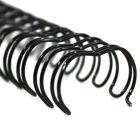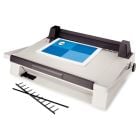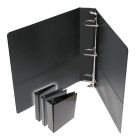Creating a Media Kit For Your Businesses
A media kit is the first step to getting your company some positive attention in the press. Here are a few tips to get you started.
Press Release:
Every media kit worth its salt contains an up to date and relevant press release. Press releases should read like news stories and start with perhaps two or three paragraphs of up to date news information, such as a recent award your company has received or new product line you are announcing. After those paragraphs, you should have a "boilerplate" consisting of background information about your company that you think the press might find interesting or compelling enough to contact you for a longer feature or story. Your press release should also contain quotes from relevant people within your company that can be used by your recipients for shorter blurbs. There are many online tutorials for writing good press releases that include examples, so if you still feel at a loss, check them out.
Background and Bios:
There should be a sheet that includes background and historical information about your company as well as the specific campaign or event you are looking to gain attention for. If there are key personnel that need to be featured, mention these people in the background sheet, and also include a separate sheet that includes short bios of these people as well as all of the major players within your organization. Though you may want to funnel press requests to one individual such as a communications director, you should include contact information for all the individuals that are listed on the bio sheet.
Fact Sheet:
Put together a one-sheet, bulleted list of all of the important and specific information that you want to draw attention to. The sheet should flow naturally and be easy to read, hitting the high points of your project. Make it as interesting and compelling as you possibly can while keeping the page brief and readable. Make them want to read more, but don't get too cute with it.
Photos:
Include two or three high quality, print-ready photographs that your audience can use if they print a story about you. This makes their job a lot easier, and just might be the thing that tips the scales in your favor.
Press Clippings:
While having received press in the past gives you some credibility, you don't want to give press outlets the idea that you have already been covered to death, so be judicious in your use of clippings. Be especially wary of including clippings from rival publications. You can pick and choose what to include depending on who you are sending the kit to.
Cover Letter:
Your cover letter should include and introduction and thanks, and explain to some extent what the purpose of your kit is. If you have article ideas, include them, but don't get too pushy as the writers will not like being told what to do.
Promo Material:
Go ahead and put any pertinent brochures you have in the media kit, as these can contain some great information and lend credibility to your organization. If you can include a sample of your product, that's great too.









